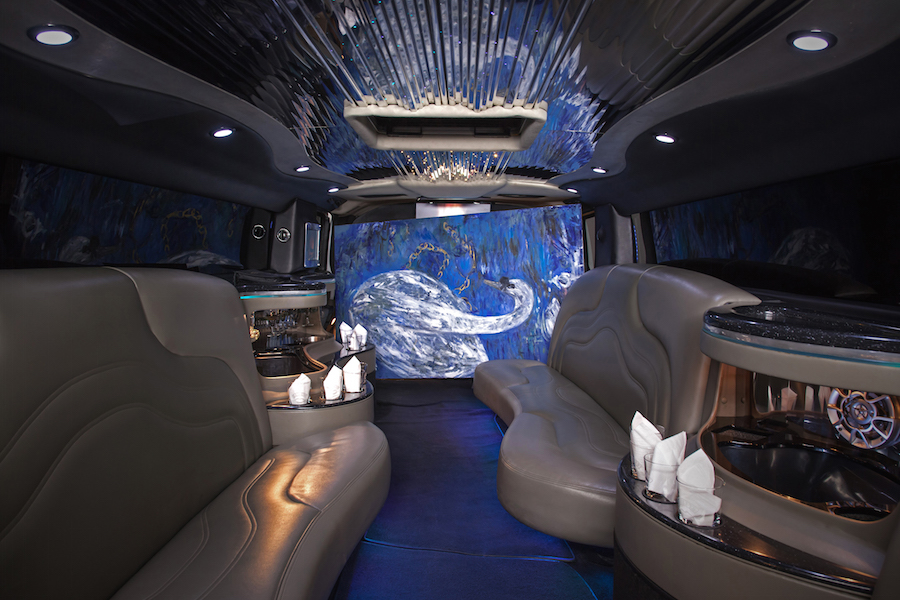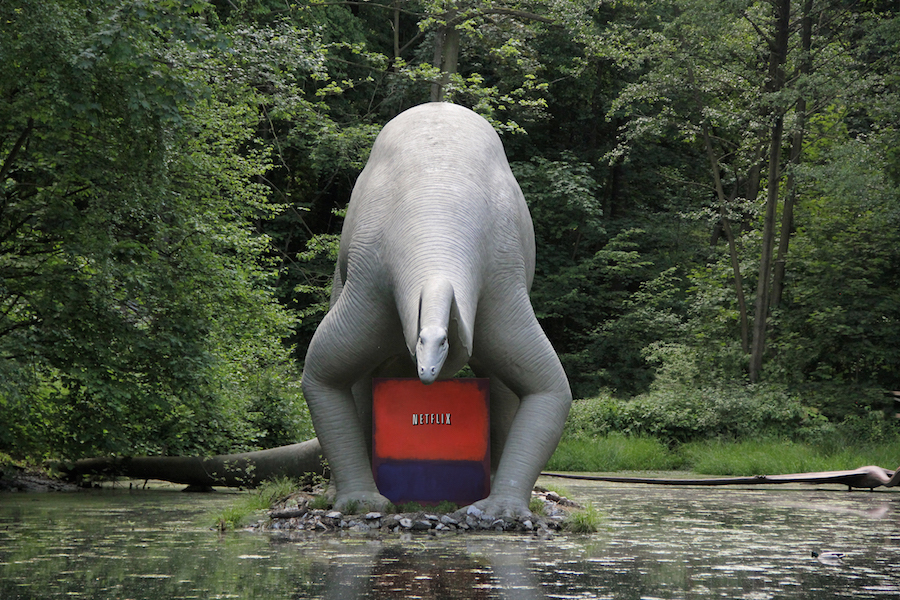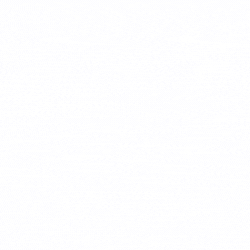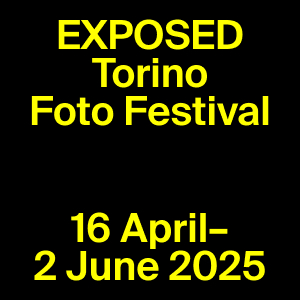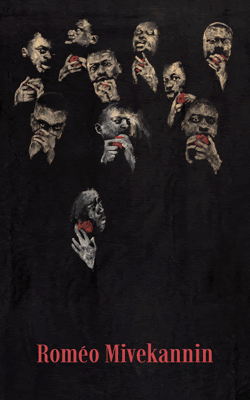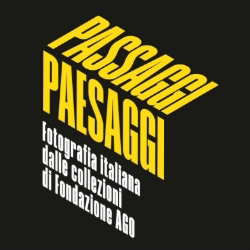[nemus_slider id=”50994″]
In the end of 2014 artists Paul Barsch and Tilman Hornig created New Scenario, a project devoted to create new exhibition formats beyond the usual white cube style exhibition. From hosting a show inside a person’s anus to a painting group show in a dinosaur park in Kleinwelka, New Scenario is smartly redefining the online show format.
We asked some questions to Paul Barsch and Tilman Hornig.
ATP: How did you guys meet and how come you started working together on New Scenario?
Paul Barsch/Tilman Hornig: We met while studying at the Dresden Art Academy. Not in the same class but we had common interests and mutual friends. After finishing Meisterschülerstudium and hence saying goodbye to art school we had studios in the same building, so basically we were hanging out there, fooling around most of the time back then. The idea for New Scenario evolved in late 2014. It started with the exhibition in the Limousine – and while preparing this a lot of other ideas emerged. It was kind of obvious that we had started a real project. We have a long list with great ideas.
ATP: From which necessities did you decide to create this project?
PB/TH: We got a bit bored by the standardized white cube exhibitions, that basically look the same all over the world, on and off line. Once in a while we stumbled over images where artworks where placed or documented in different settings, in a shady backyard or somewhere unusual. That always adds a different layer or a certain atmosphere to the artwork. That makes it fun an interesting to look at. It opens up imagination and pulls a certain narration in. You get stuck with these type of images. You enjoy the experience. They break your scrolling routine. We found that most of the called online exhibition were just imitating the physical exhibition space, the white cube and thus just upgrading the same boring spectatorship. We started New Scenario to add something else, to create an alternative and show that there is more to online exhibiting (or exhibiting in general) than just plain documentation (or placement) of artworks in neutral space. We want to create exhibitions that transport a special experience a certain feeling or strange atmosphere. We strife to define and set standards in the field of online exhibitions. We try to add a cinematographic perspective to real life online (and offline). We consider curating for New Scenario as part of our artistic practice. We curate in the same way we would create artworks.
ATP: The shows you create are meant to be experienced mainly online through your website. The virtual duration of the show is hence infinite if compared with its physical installation. The “scenarios” you choose are also deeply connected with time and temporality. Could you discuss further about this?
PB/TH: Because of the nature of the setting or other circumstances it’s mostly impossible to experience the exhibitions physically. The online availability makes it possible for everybody to see the shows. When C R A S H launched in January this year, more than 10000 people visited the website in the first weeks. It’s hard to get this amount of people squeezed in a stretch limo 😉 The online exhibition can practically last forever. The New Scenario platform is more like an archive where one can always go back to and watch a show. Like your favorite movie or book: you watch or read it from time to time. You just grab your DVD or book from the shelve or type in that website. The physical installation, that what used to be the exhibition becomes the production site and what used to be the documentation becomes some sort of exhibition. It’s far more complex than that, but in easy terms there is this shift. The production lasts half a day, the exhibition can be on forever. The “scenarios” we choose must have a specific potential and substance to be able to create a special feel or cinematic atmosphere. They must have the potential to be a movie. There is a great proximity to movie making in what we do. Maybe there is the connection with time and temporality. (Isn´t there a connection to precise contemporaneity too?)
ATP: How do you choose the artists for the shows?
PB/TH: It depends on the project we have in mind. We try to work with artists whose works we like or have made an impact, that are are easy going and open to our approach. Some projects require only certain types of artworks. In the case of JURASSIC WORLD, we only exhibited paintings. In the case of the upcoming BODY HOLES series, the artworks are limited in size. We ask people if they are interested to show their work in these kinds of “scenarios”. Some artists reject or their galleries don’t let them. Sometimes we have a specific piece in mind, that we wanna show, sometimes we leave it open to the artists what they wanna contribute. We try to get a good mix of male and female artists from around the world, and also push some underestimated names. The project is a good way to get to know other artists whose works you like. If the artists are well networked it also pushes the project, because the more people they know the more people will share – and viceversa.
ATP: You recently curated a section in MOULD MAP 4 – EUROZONE SPECIAL called “DYCHTOPIA”. At first, it looks like a scifi trailer. In the credits of the pdf you can download from your website, you found out you actually wrote a script for that. Could you tell me more about its backstory?
PB/TH: The MOULD MAP 4 was meant to reflect on possible european futures and activist imagery. We tried to outline a far-out post-human future. A total coalescence of digital and corporeal matter into one world spanning organism. We asked artists to contribute one or more images that we merged into custom build sets to visualize this imagined organism. The script is more like a description of aspects or landscapes of that organism. It would be great to work with producers to actually turn this into a movie. A movie without actors of course. That’s the future.
ATP: Could you introduce me (sorry for the pun) to the show “EPISODE 4: BATHROOM” you organized together with Agatha Valkyrie Ice from OSLO10?
PB/TH: The people behind Agatha Valkyrie Ice invited New Scenario to Basel mainly to produce Chapter 7: ANUS of the upcoming BODY HOLES series. An exhibition series that takes place in the orifices of the human body —such as mouth, nose, …—that will be published in early 2016. In the time Agatha curates OSLO10 every exhibition embodies a room in Agathas imagined house. During our stay in Basel we created a physical exhibition that embodies the “bathroom” of Agatha. Both things are only loosely connected by subject. EPISODE 4: BATHROOM is an exhibition by Paul Barsch and Tilman Hornig and Chapter 7: ANUS is a project for New Scenario. The production of Chapter 7: ANUS was not part of the show and not public. Some of the works from Chapter 7: ANUS where incidentally displayed in the installation as a vague hint to the project.

